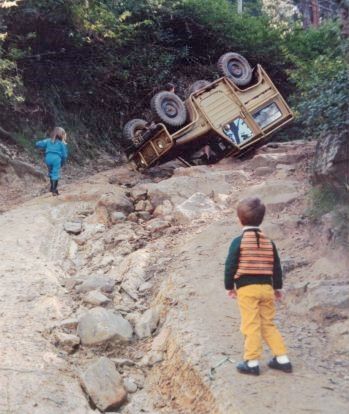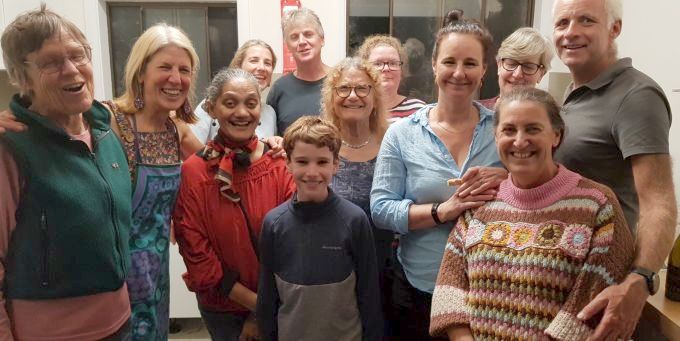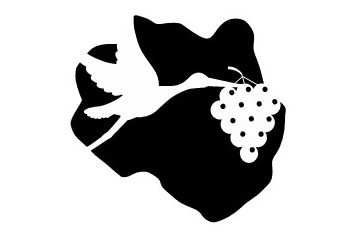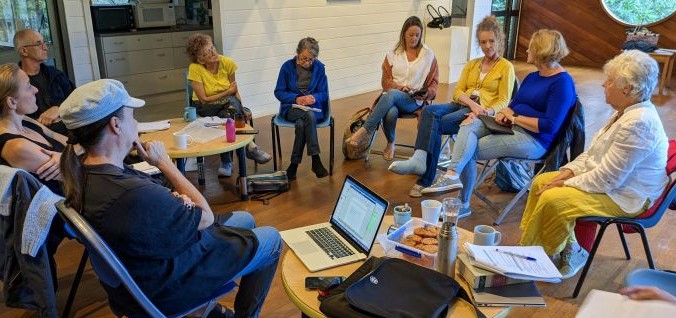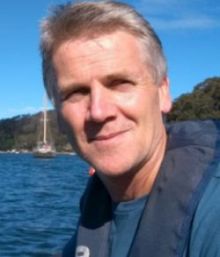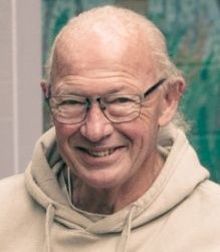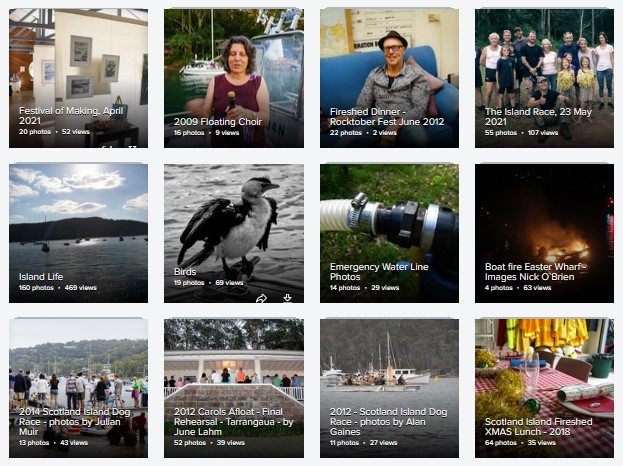| Having trouble reading this newsletter? Visit https://ymlp.com/archive_gesgjgm.php | |||||||||||||
 |
|||||||||||||
May 1, 2023 |
|||||||||||||
|
Newsletter for the
Offshore Residents of Pittwater, Australia - Volume 24,
Issue 1193
We acknowledge and pay our
respects to the Traditional Custodians of
Pittwater, as well as our Indigenous readers
|
|||||||||||||
Contents:
Did Scotland Island Used To Be More Fun?A comparison of census data, 2001 to 2021Roy Baker 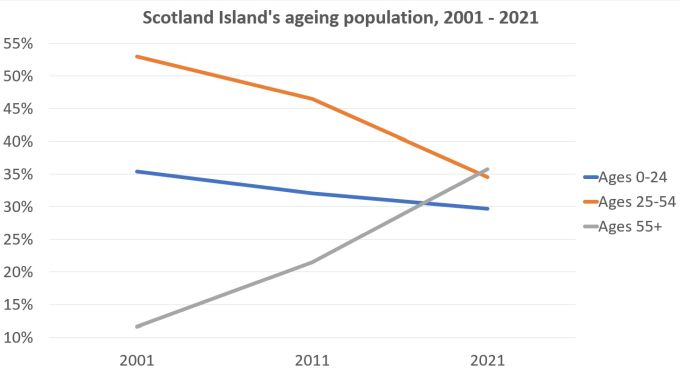 I get the feeling from some of Pittwater’s enduring residents that the offshore community enjoyed a kind of golden age. This was when the island and the bays were full of characters: salt-of-the-earth types whose exteriors, rougher than our roads, hid hearts of gold. Always ready to muck in and lend a hand, they walked everywhere, partied hard, rubbed along together and never complained. Was it ever like that? I don’t know, because I wasn’t around. What’s curious is that this happy era, though imprecisely defined, was always just before I arrived. I’ve lived offshore for 17 years now, not insignificant compared to many. But still, I'm told, the island was definitely better before I came. Rather than take that message personally, I’ve been looking at the census data to see how, objectively speaking, Pittwater has changed. We tend to be pretty self-congratulatory in terms of levels of volunteerism, so in the next PON we’ll see how we really compare. But in this edition I contrast the Scotland Island of 2021 (the most recent census) with that of 2011 and 2001. And apologies to our friends on the western foreshores, but the census data means that, for the time being, we need to restrict our discussion to the island. 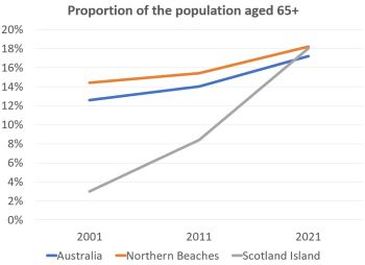 In many
respects little has changed over the last two decades.
Scotland Island had 358 private dwellings in 2021, 20 more
than in 2001. Even so, its permanent population has hardly
altered: 711 people called it home two years ago. Yes, we
have become more secular (61% of islanders fitted the ‘no
religion’ category in 2021, compared with 31% in 2001).
And we are less likely to be married (50% now, compared
with 59% then). But these reflect national trends and
don’t reveal much unique about our community. In many
respects little has changed over the last two decades.
Scotland Island had 358 private dwellings in 2021, 20 more
than in 2001. Even so, its permanent population has hardly
altered: 711 people called it home two years ago. Yes, we
have become more secular (61% of islanders fitted the ‘no
religion’ category in 2021, compared with 31% in 2001).
And we are less likely to be married (50% now, compared
with 59% then). But these reflect national trends and
don’t reveal much unique about our community.What leaps out is how we’ve aged. In 2001, less than 12% of islanders were aged 55 or older. Now that proportion is 36%. In fact, if we divide the island population into three age categories (0-24, 25-54, and 55+), 2021 was the year when the oldest cohort outnumbered each of the other two. The decline in youngsters is most marked among pre-schoolers. Ever wondered why the island kindy closed and we are converting the building into a recreation centre more suitable for old folk? In 2001 the island had 48 children under five. Now it has around 19. In 2001 there were 22 people aged 65 or older. Now there are 125. And while on the subject of communal recreation facilities, we really need them. In 2001 there were just 36 single-person households on the island. Now there are 56. But it would be a mistake to conclude that we are turning into a retirement village. Instead, we’ve just become a lot more like the mainland. Australia is an ageing country: nationally the proportion of people aged 65 or older has increased from 13% to 17%. The Northern Beaches has a slightly older demographic: that proportion has gone from 14% to 18%. The difference is barely noteworthy, unlike what has happened to our community. In 2001 just 3% of islanders were over the age of 65. Now it’s 18%, the same as for the Northern Beaches generally. So what happened? Are we a stable population that has grown old gracelessly together? To some extent, yes. But we all know that in the last 20 years many of our neighbours and friends have moved off the island, and new ones have taken their place. I think it’s more plausible that many departing younger families were replaced by those in or approaching retirement. 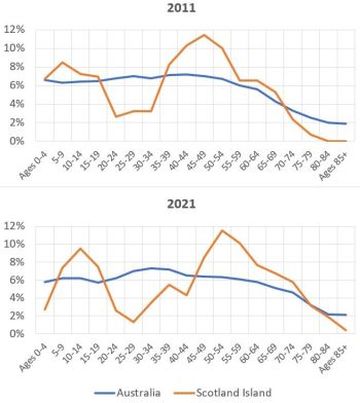 As
you will see from the charts to the left, the age profile
of the island community has a distinctive double dip. This
suggests that families tend to move on with children of
school age. It follows that we have unusually large
numbers of youngsters around the ages of 5 to 14. But ask
any islander and they’ll tell you that when kids hit
mid-teens they and their parents start to move away.
What’s more, few 20-somethings stay on the island or come
to live here. As
you will see from the charts to the left, the age profile
of the island community has a distinctive double dip. This
suggests that families tend to move on with children of
school age. It follows that we have unusually large
numbers of youngsters around the ages of 5 to 14. But ask
any islander and they’ll tell you that when kids hit
mid-teens they and their parents start to move away.
What’s more, few 20-somethings stay on the island or come
to live here.These are established patterns. But they have become more accentuated, even in the last decade. Whereas in the past the island intake often consisted of couples in their 30s with pre-school age children, today they are more likely to be well into their 40s and have children already at school. What’s more, there has been a change among the older age groups. In 2011 there was a marked tendency for people to move off the island as they approached retirement, and certainly when they reached their 70s. Life just got too hard. That’s still happening, but less so, to the point that today the proportion of people in their early 80s is barely different to that in Australia as a whole. Why are more retirees moving onto the island, and why are those already here sticking around? My hypothesis is a simple one. Despite our incessant whining, our infrastructure has greatly improved. We live in an age of free ferry passes and inclinators. Our roads are vastly superior to when I arrived in 2006, hence the flourishing of buggies in the last decade or so. So, perhaps we really were sturdier in limb and heartier of soul in the past, not just individually but as a community too. But I suspect that there’s something else underlying the idea that the island used to be more fun. It hints at a perception that we have gentrified, that the old characters have gone and we are left with a boring bunch of lawyers, academics and the like. Does the census bear that out?
But I suspect that the concept of gentrification also has to do with type of work. Surprisingly, the proportion of employees classed as ‘professionals’ has dropped from 40% to 33%. But the proportion categorised as ‘managers’ has increased from 15% to 20%, while the percentage classed as ‘clerical and administrative’ has dropped from 13% to 9%, ‘labourers’ from 5.4% to 3.6%, and ‘machinery operators and drivers’ from 3.1% to 1.7%. This hints at gentrification, but none of this really answers the question whether the island used to be more fun. That’s not the kind of thing censuses report on. But allow me one observation. In 2021 the ABS began asking whether people have a mental health condition, including depression and anxiety. We can’t compare the island with how it used to be, but we can compare it with other regions. 5.3% of islanders reported some kind of long-term mental health condition, compared with 8.0% for NSW state-wide and 8.8% nationally. That said, the island scored no better than the Northern Beaches as a whole. So, did Scotland Island have a golden age? Perhaps it did. But we seem to be a little wealthier now, and happy relative to much of Australia. With a median age of 48, compared with 39 in 2011, we’re definitely an older community now than even ten years ago. But the young don't have a monopoly on fun. We can still muck in and lend a hand, even if it is harder to walk everywhere and party hard. For Scotland Island census data for 2001 click here, for 2011 click here, for 2021 click here. Island Feast for Freedom 2023Another successful community fundraising dinnerCB Floyd
The Feast for Freedom dinner was an amazing event and so well supported by our community. The team would like to sincerely thank everyone who came to the dinner on 29 April and everyone who donated to support asylum seekers. We also thank the late leavers who pitched in and dismantled chairs and tables in the twinkling of an eye at the end! Our fundraising is still happening, but it looks like our event this year will provide at least $2500 to the Asylum Seekers Resource Centre. That’s pretty close to our fundraising goal of $3000. If you were unable to attend but would still like to donate, click here. I would like to thank the brilliant team that made this all happen. The chefs were Jon Duhig and his assistant Barbara Labrum, who created the masterchef-worthy gourmet entrée. On the mains were myself and Janet Lamble with her amazing Cypriot grain salad. On dessert, Lizzie Hazelwood and Georgina Orr presented their beautiful turmeric and cardamom pears, and Melinda Ham created the scrumptious vegan baklava. A huge thank you to Roy Baker, who not only managed all the wine sales but who played a big role in getting the Rec Centre ready for the night. Roy was ably assisted at the bar by Dan Richards. Also many thanks to Tim Turpin who has laboured tirelessly on the Rec Centre over the last few months, and Robyn Iredale, who organised the renovations. Thanks to the other hardworking members of our team: Petra Godfrey, Harriet Witchell, Simon Tucker and Antonia Swift. Juliet Holmes à Court made the tablecloths and designed the décor, and we had willing help setting up from Helen Webster, Sharon Kinnison and last, but by no means least, Henry Orr. Our other team member, Amber Ellis, unfortunately caught the dreaded COVID and was unable to join in – next time Amber! Without naming names, we also acknowledge that everyone on the team who spent money on the food shopping has donated all or part of those expenses. This has made a huge difference, so many thanks to all of you for putting your money where our mouths are! 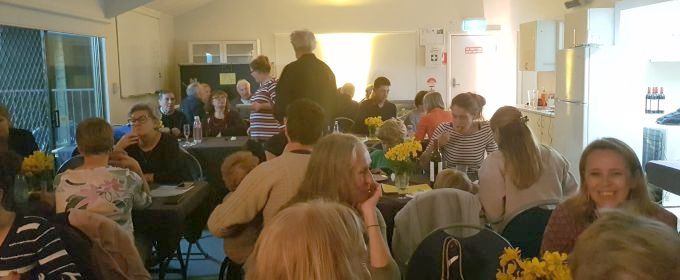 Two Catherines: A Twisted Scotland Island TaleTickets are now on sale!
Only 47 more sleeps until
the island play! With performances due in the Scotland
Island Community Hall on 16, 17, 23 and 24 June, the
opening night is fast approaching.
Below we present, for the
first time, the superb poster designed by islander
Nettie Lodge. Underneath the poster is a link to where you can buy your tickets.
In this edition we also
introduce three more of the actors. But first we hear
from producer Robyn Iredale, the person who devised the
Two Catherines play, and whose energy and skills are
bringing the project to fruition.
The Play, And How It Came About Robyn Iredale
The history of Scotland
Island is replete with stories about men – most notably
Andrew Thompson (a former convict) and Herbert
Fitzpatrick (a land developer). But we know very little
about the women associated with the island. The opening
of the Two Catherines Café, in August 2019, was the
first step in redressing this imbalance. But in order to
understand more about the role Catherine Benns and
Catherine Bouffier played, we needed a story.
The idea developed to
produce a play and this was enthusiastically received by
some of the island’s residents. This gave me the courage
to start the process – which was totally new to me. As
an academic I knew nothing about this field, except that
one has to perform a lot when teaching.
A small committee of Greg Waters, Carol Floyd, Roy Baker and myself was then formed. Greg Waters, a well-established scriptwriter and island resident, became our guiding star. Commissioning a playwright was the first step and Jasper Marlow, a young playwright, was selected by the steering group and ably mentored by Greg. The development of a ‘treatment’ was stage one, followed by the interactive drafting process. The play focuses on two women whose paths, we presume, never crossed on the island. But in the world of theatre we can just make things up! The job of casting has been interesting and it is amazing to me just how the right people pop up when you need them. The Director, Sophie Lepowic, moved to Elvina Bay in 2022 and her professionalism and enthusiasm have been a pleasure to work with. She will play Catherine Bouffier and Roy Baker, Sophie Blackband, Betsi Beem, Jo Cartermay, Lisa Day, Lisa Ratcliff, Ian White, Juliet Wills and Larry Woods will make up the rest of the cast. Kay Reaney is ably assisting with many aspects of the play and her expertise is invaluable. Gill Unwin will return to the stage management role that she has filled in past productions. We are very lucky to have Markus Plattner back and he, together with Geoff Bullock and Rod Heard, are writing original music and lyrics. The play will be peppered with musical items and it will be lively and entertaining, so come and enjoy it!  Presenting Some Of The CastIn the
last edition we introduced four talents behind the
play: Robyn Iredale, co-producer Kay Reaney, the
playwright Jasper Marlow, as well as the director and
lead actor, Sophie Lepowic. Now we come to some of the
other onstage performers, introduced by order of
appearance.
The
Historian:
Roy Baker
Playing the part of ‘the Historian’, a stuffy academic
with an interest in local history and a tedious
obsession with factual accuracy, shouldn’t overstretch
Roy’s acting abilities. |
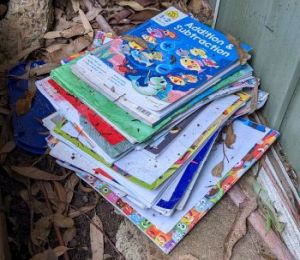 |
| Children's
books left out in the rain in the Recreation Centre playground |
Let's keep the dream alive! Without the kindergarten, it's up to us to find ways to connect and share the fun of young children. Parents, grandparents and their children from babies to four are meeting in the park and playgrounds on Tuesdays from 9 till 11.30am, weather permitting. If there were a few more of us, it would be worth hiring the hall through winter and organising some inside activities too. Anyone else interested? Have a chat with me on 0406 806 648.
If so, please ask them NOT to go into the shed in the Rec Centre (old kindy) playground and get stuff out. Council is hopefully fixing the broken door so it can be locked, but they haven't yet. In the holidays kids have again had fun rummaging around and leaving stuff outside. Understandable, but please don't!
The Tuesday Discussion Group
Scotland Island Community Hall
Tuesday 16 May, 11 am - 12.30 pm
The Recreation Club runs a discussion group, meeting on the third Tuesday of each month, from 11 am to 12.30 pm in the Recreation Centre. Everyone is welcome.
Members take it in turn to design a session. At the April session, Roy Baker led a discussion on self-help books: do they help us lead happier, more fulfilling lives?

Continuing in the same vein, for the May meeting Bill Gye will ask what factors shape human well-being? We all have some sense of what it means to live a good life. So what are the essential ingredients? What should we prioritise? What should we avoid? And how do we go about maximising our enjoyment of the limited time we have? For preparation:
1. Read the Wikipedia article 'Well-being contributing factors', available here.2. Read 'The Nature of Human Well-being', from the Encylopedia of Puget Sound, available here.
The group is administered via a WhatsApp group, which
will be used to distribute further information about
this and future discussions. If you would like to be
added to the group, send your mobile phone number to editor@scotlandisland.org.au.
Alternatively, contact Jane Rich (janebalmain@hotmail.com) for
more information or to express your interest in
participating.
The Recreation Club asks for $5 per person per attendance to defray expenses.
Seafarers' Shindig
Scotland Island Recreation Centre
Saturday 20 May, 6.30 - 10 pm
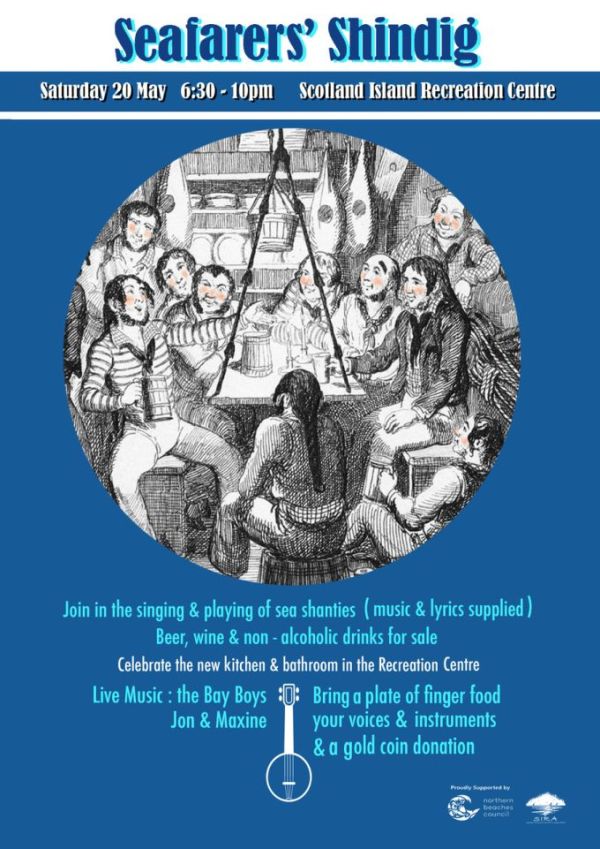
International Folk Dancing
Scotland Island Community Hall
Saturday 27 May, 7 - 9 pm
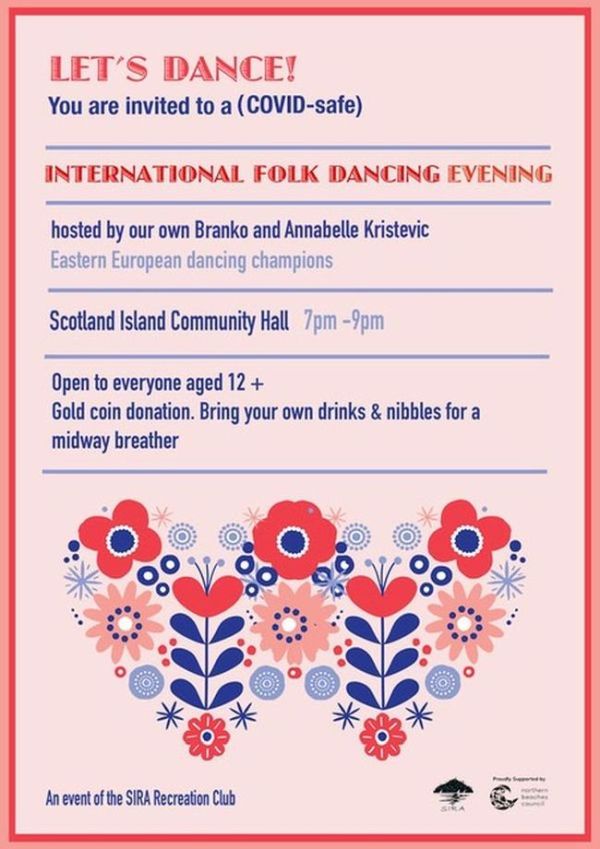
Scotland Island Café
Scotland Island Community Hall
Sunday 28 May, 10 - 12 noon
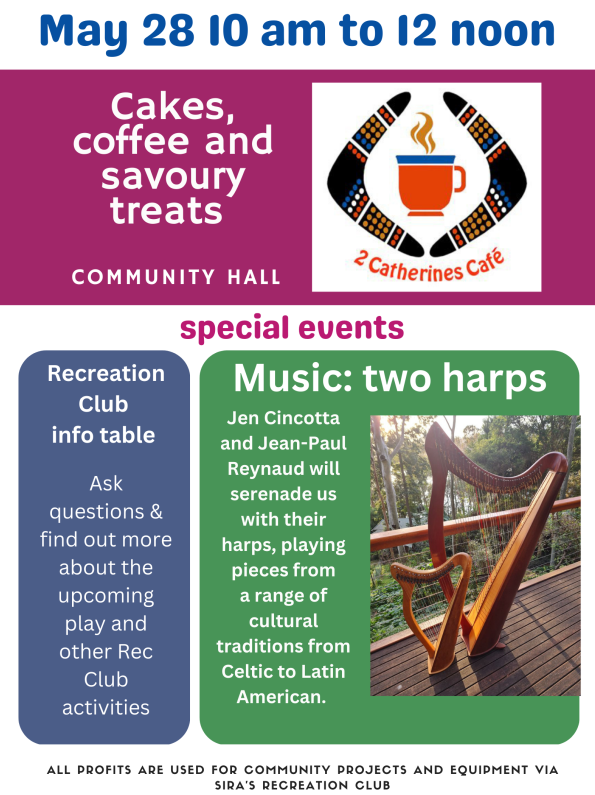
Scotland Island Fire Shed Dinner
Scotland Island Fire Station
Saturday 3 June, 7 pm onwards
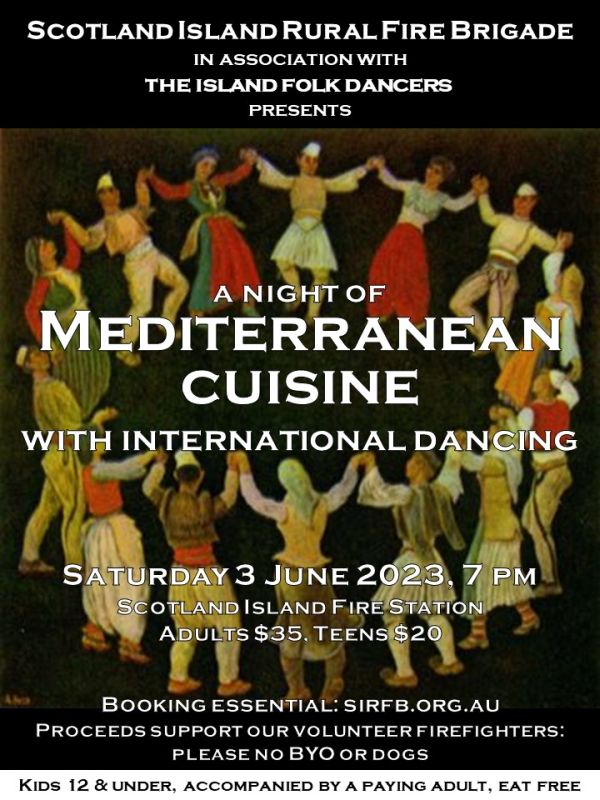
Scotland Island Revive Retreat
Scotland Island Community Hall
Saturday 10 - Monday 12 June
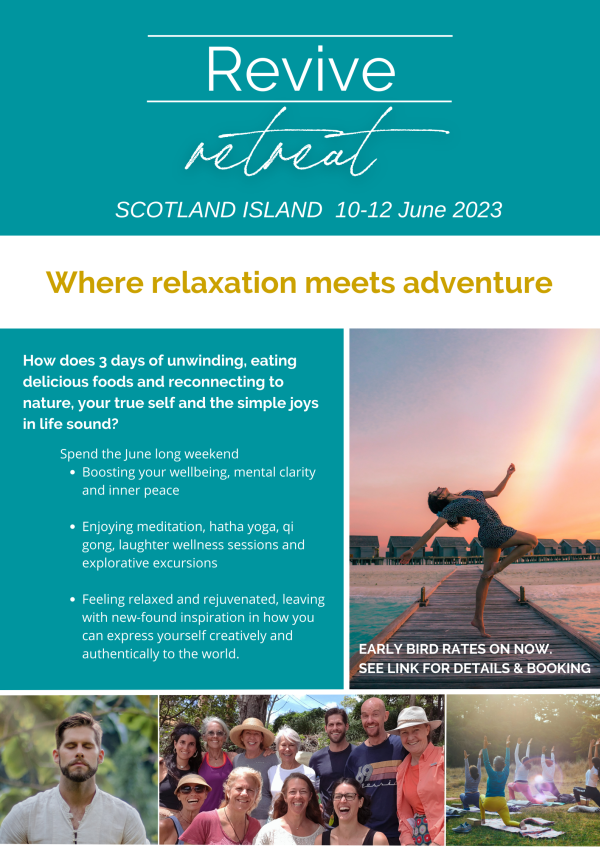
Two Catherines: A Twisted Scotland Island Tale
Scotland Island Community Hall
Friday 16 & Saturday 17 June, 7.30 pm
Friday 23 & Saturday 24 June, 7.30 pm
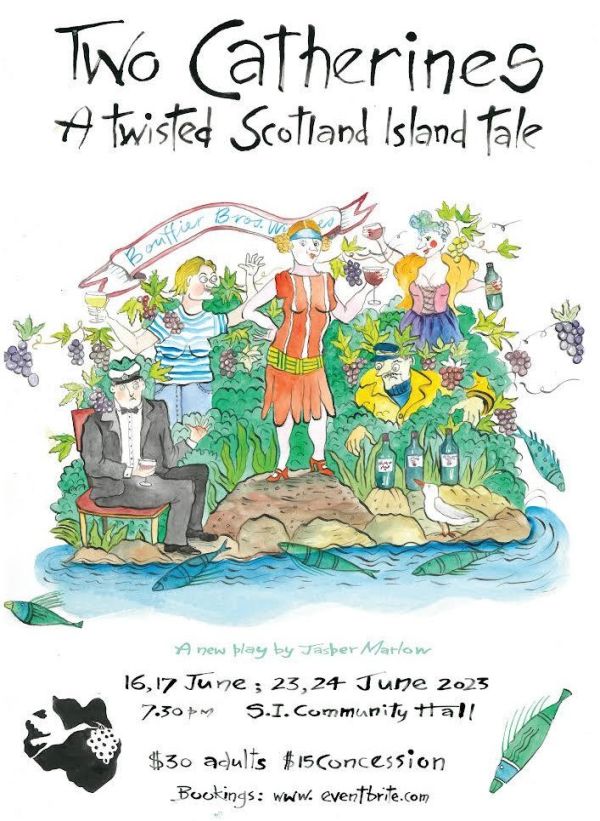
Winter Market Day
Scotland Island Catherine Park
Sunday 25 June, 10 - 1 pm
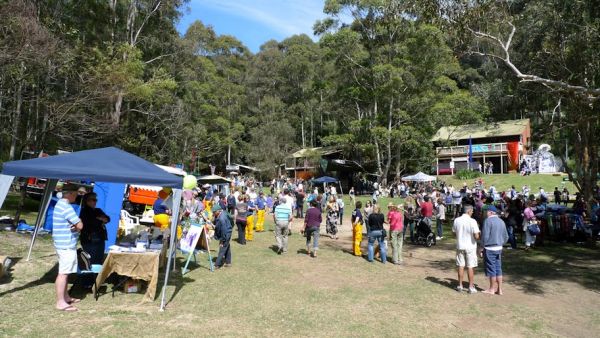

For sale: Stacer 498 Bowrider 2007
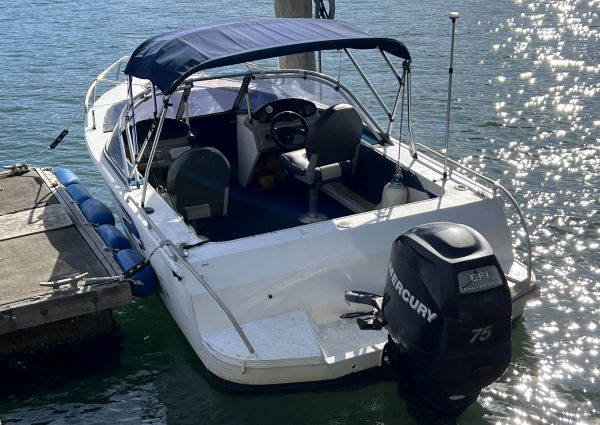
Fully set up for offshore commuting with antifoul (last done July 2022), navigation lights and all safety gear.
Other gear includes swimming ladder, Bowrider cover, new seats, anchor, chain and rode, bow roller (not shown), rod holders, fenders and lines.
Great boat with plenty of power and weather cover for offshore commuting. Hull in very good and sound condition but paint not perfect. Always berthed at RMYC and home jetty.
Only selling due to upgrade.
Asking $23,000 ono
Please call Richard 0414 560 505.
Island home for rent


Missed out on a previous newsletter?
To Contribute
If you would like to contribute to this newsletter, please send an e-mail to the editor (editor@scotlandisland.org.au).Subscription Information
To subscribe or unsubscribe, go to: http://www.scotlandisland.org.au/signup.
Follow the PON: |
 |
 |
 |
Scotland Island Community Calendar
For further information on island events, click here
The Online Local Contacts Guide
Click here to load
SIRA Photo Archive

